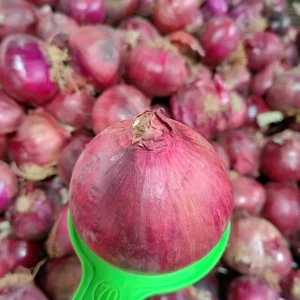If you have eyes on the onion, it can be a beautiful way to start your business. Onion has a rising demand especially due to current trends and processing.
Whether fresh or fried, it is equally effective. Plus, its health values are quite appreciated. Therefore, onion pricing can be a significant factor to learn about.
Today we will discuss the onion pricing and mention the key factors driving the price structure. We will also learn about the prices in various regions.
Onion pricing in different regions of the globe

Onion pricing fluctuates from region to region. Each area has its regulations and import-export facilities. Based on those factors, we have sorted out the various places with a definite cost structure.
-
North America
The US and Canada are already leading the charts with their onion production facilities. As a consumer, you can export the products from these regions with the premium quality. However, you get a quote of $1.50 – $2.00 per kilogram.
-
Europe
European countries also produce the onion. They rely on China and India to import onion products for increased demand. Therefore, their pricing structures are comparable with those of North America. €1.20 – €1.80 is the per kilogram onion price in the European regions.
-
Asia-Pacific
In the Asian region, there are two production giants. China and India have favorable environments for onion production. Plus, they allow users to export onions around the globe. The excessive supply and demand have significantly reduced pricing, going up to $0.50 – $1.20 per kilogram.
-
Latin America
Latin America includes Brazil and other countries. It also has reduced pricing per kilogram. You might wonder why the onion prices are $0.80 – $1.50 per kilogram. Is that right? Don’t worry; the demands are low in regions with sufficient production.
| Region | País | Onion Price (per kg) |
| North America | Estados Unidos | $1.50 – $2.50 |
| Canada | CAD 2.00 – CAD 3.00 | |
| Europe | United Kingdom | £1.00 – £1.80 |
| Alemanha | €1.20 – €2.00 | |
| Espanha | €1.00 – €1.50 | |
| França | €1.50 – €2.50 | |
| Itália | €1.30 – €2.00 | |
| Asia-Pacific | India | ₹40 – ₹80 (approx. $0.50 – $1.00) |
| China | ¥3 – ¥8 (approx. $0.40 – $1.10) | |
| Australia | AUD 2.00 – AUD 3.50 | |
| Japan | ¥150 – ¥300 (approx. $1.00 – $2.00) | |
| South Korea | ₩1,500 – ₩3,000 (approx. $1.10 – $2.30) | |
| Latin America | Mexico | MXN 20 – MXN 35 (approx. $1.10 – $1.90) |
| Brasil | R$5 – R$9 (approx. $1.00 – $1.80) | |
| Argentina | ARS 300 – ARS 500 (approx. $0.85 – $1.50) | |
| Africa | South Africa | ZAR 15 – ZAR 25 (approx. $0.80 – $1.30) |
| Egito | EGP 8 – EGP 15 (approx. $0.25 – $0.50) | |
| Middle East | Saudi Arabia | SAR 4 – SAR 8 (approx. $1.00 – $2.10) |
| United Arab Emirates | AED 3 – AED 7 (approx. $0.80 – $1.90) | |
| Oceania | New Zealand | NZD 2.50 – NZD 4.00 |
| Eastern Europe | Russia | ₽50 – ₽100 (approx. $0.60 – $1.20) |
| Southeast Asia | Indonésia | IDR 15,000 – IDR 25,000 (approx. $1.00 – $1.70) |
| Philippines | PHP 50 – PHP 120 (approx. $0.90 – $2.10) |
Factors impacting the Onion pricing
Onion prices fluctuate based on various factors. Here is the complete list of all the factors influencing the onion pricing.
-
Weather and Climate changes

Bad weather is a name of the decreased onion production. Unfavorable conditions lead to decreased yields. The result is increased demand as the supply is insufficient to meet the needs.
So, the result?
Users experience reduced supplies and elevated needs. It leads to elevated costs. India, specifically during monsoon, experiences such cases and decreased yields. It leads to decreased supply, elevated demands, and increased costs.
-
Seasonal variations
Seasonal variations are more than a significant factor. In the harvesting season, there is an excessive supply of onions. It leads to fulfilled demands with the increased supply.
Therefore, prices fall to the ground. Consumers experience up to 100-200% decreased pricing based on the seasonal changes.
-
Supply Chain disruptions
Onion production and demand are not the sole factors affecting the supply chain. Instead, there are other factors such as shipping.
Fuel prices and availability of the shipping staff can influence the prices. For instance, you are shipping onions during peak season. As a result, the prices will be at their peak. You’ll get the elevated shipping costs that add up with the onion pricing, leading to elevated expenses.
-
Global Demands
The prices of onions rely more on supply and demand. Local demand and supply are as crucial as global demand.
Therefore, if international production and exports are low, the prices jump heavily. If the production is high and the demands are less, prices will be lower.
-
Production Costs
Natural growth, harvesting, and production are the key production drivers. Technically, multiple factors contribute to the pricing.
So, raw materials prices can skyrocket. Harvesting prices can also kill the rates. Whatever the reason is, consumers have to think about the increased production globally and get a quote from the suppliers.
Onion global markets and statistics
Onion is globally on the rise because of elevated demands in the cuisines. Here are some facts related to the onion market.
- Onion has a market size of 118.45 million tons in 2023. It is expected to grow at a faster pace in the coming years.
- The growth rate of the onion market is 3.30%, which is exceptional and provides speedy growth.
- The forecasters believe it will reach 158 million tons of production in nine years.
Overall, onions are part of various food industries, including fresh to processed foods.
Conclusão
Onion pricing can vary from one region to another. Are you wondering why? This is because of the local production, accessibility, and quality of the onion.
Whenever looking for the onion, dig up the top suppliers. Assess the quality of the onion and check prices.
FENDUNI onion suppliers can be your one-stop solution. We offer affordable prices and bulk production. Also, expect the export to arrive at your doorstep. Talk to our team right away!
